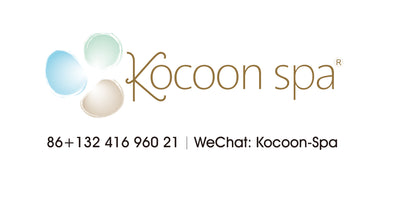Migraine: an alternative approach
When I had lunch with Maika and Begonia last week, they both talked about a heavy migraine attack like they never had experienced before. While they discussed about different remedies like tea or pulverized seaweed, I thought about my home country, France, where people immediately take drugs when getting headaches. So I started some research finding out what really helps: an alternative approach.
Overuse of medication can sometimes lead to chronic headaches. An alternative approach can help to find the balance of life and avoid migraine attacks from the beginning.
Reasons for migraine attacks
According to the traditional Chinese medicine approach, the headache is a result of disturbance or imbalance of Yin Yang within the Zang-Fu organ system or the Channel system (Meridians), which are the two principal systems that regulate the functions of the body and mind.
The most common reason, which causes migraine headache, is a disharmony of the Liver system. This system normally regulates the flow of Qi (life energy) and stores the soul. A disharmony of the Liver system causes irregular Qi flow and blood stasis, and accumulates heat inside the body.
Both the Qi stagnation and the heat accumulation may result in migraine headache.
Another common reason is the dysfunction of the kidneys. According to the theory of the Five Elements, Water energy (Kidney) produces Wood energy (Liver). The Kidney deficiency, caused by prolonged illness, may result in the Liver Yin deficiency and trigger headache.
Migraine headaches are also triggered by other external factors such as wind, damp heat and cold. Examining the nature of the headache usually helps to identify the factors causing the headache. For example, wind causes a moving headache (the location of the pain changes), damp results in a headache with heaviness and cold causes a headache that may get worse when the temperature drops.
What you can do: alternative treatments
Using Ice, biofeedback and relaxation can give the relief that is similar to the help from medications once an attack has started.
Biofeedback uses a monitor to train you to recognize the onset of muscle tension and changes in body temperature that are signals of stress. This technique can help you gain more control over normally involuntary functions like heart rate, skin temperature and blood pressure. The therapy is used to help prevent or treat conditions including migraine headaches but also chronic pain, incontinence, and high blood pressure (read more about Biofeedback)

Acupuncture, a form of Chinese medicine using very fine needles inserted in specific spots to balance the body’s energy flow. Acupuncture is based on 2500 years of Chinese medical tradition. Normally the therapist determines the specific acupuncture points for each specific patient, but a typical puncture site for migraines is the area between the thumb and forefinger, and the insides of the ankles.
Guasha, a technique of massage that involves repeatedly scrubbing the surface of the skin in certain parts of the body with a tortoiseshell, is used to bring deep blockages and toxins to the surface of the body before being released. It helps in this way to dredge the meridians, activates the blood flow and removes toxins. We self tested this massage at Kocoon spa and it really released the headache attack.
Shirodhara is an ancient ayurvedic technique, which calms the nervous system to prevent and relieve migraines. The treatment, which takes place with the client face-up on a massage table, consists of a continuous stream of warm sesame oil poured over the forehead and down the scalp, and induces a state of deep relaxation.
Butterbur contains petasin that is said to reduce inflammation and may thereby prevent the swelling that leads to migraine. You should check with your practitioner for the proper dosage, but don’t use butterbur if you’re pregnant or nursing.
Chinese herbal medicine is the core of traditional Chinese therapies for migraine headache and is very powerful to balance the body. It significantly reduces the pain, shortens the headache attacking time, reduces the frequency of the migraine and prevents the headache from happening. The duration of Chinese herbal treatment is usually 1-2 months and also depends on individual patient's condition.
Meditation and yoga can create a physiological reaction in the body that is the exact opposite of stress. Clinical studies have shown mindfulness meditation can be an effective treatment for chronic pain. Meditating also slows breathing rate, blood pressure and heart rate, which can help relieve migraine pain.
There is a big variety of alternatives to drugs. The best thing is to talk to you practitioner to see what is the best for you.
All those holistic remedies not only provide real prevention and relief, but also engender a sense of hope, comfort and freedom from migraine pain and an independence from drugs.
MIGRAINE FACTS
Migraine symptoms
Throbbing pain typically occurs on one side near the temples, forehead and eyes. Migraines can make you very sensitive to light, sound, or mild exertion, such as climbing the stairs. Many people have nausea, vomiting, or vision problems. The pain can be disabling, forcing people to miss work or other activities.
Migraine triggers
Flashing lights: reflection from snow or water or from fluorescent bulbs or television or movie screen. Wear sunglasses outside.
Anxiety and stress: emotional stress. Do some relaxation exercises, inhale and exhale slowly.
Lack of food or sleep: low blood sugar from skipping meals or eating too much sugar can trigger migraine. Drink water throughout the day or herbal tea.
Hormonal Changes: for many women, migraines are tied to their menstrual cycle
Food: avoid certain food, notably:
Foods high in tyramine: a substance found naturally in some foods like i.e. ages cheeses, smoked fish or some types of beer
Foods containing sulphites like ready meals, pizza or wine
Food containing nitrates like nuts or pressed meats
